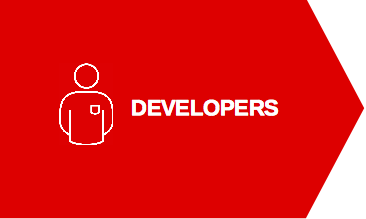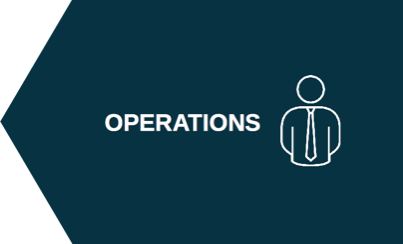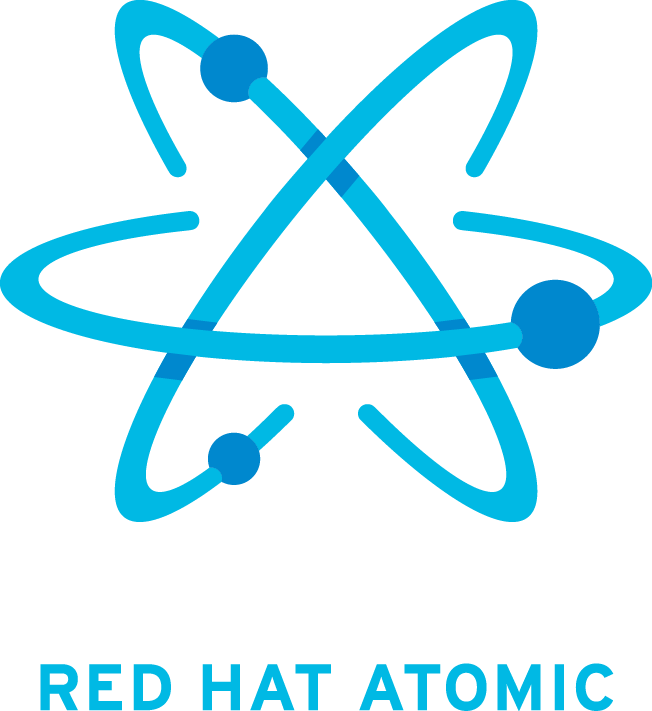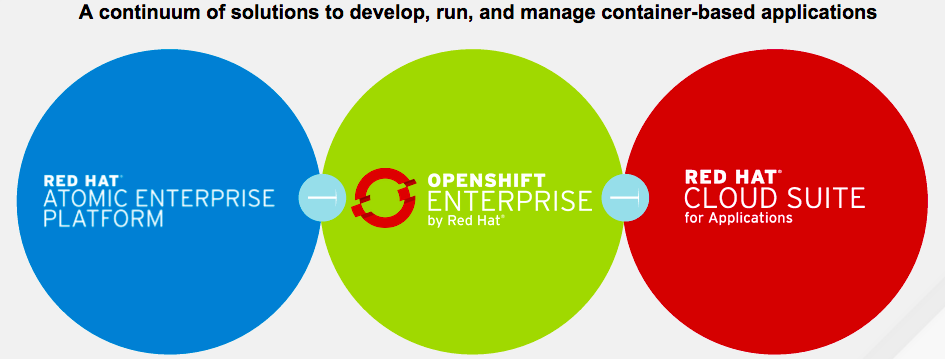DevOps and Open Source
DevOps promises to deliver better software faster, but it is not a product that you can buy and install. Instead, it is like open source: a better way to create software through a combination of culture, practices, and technologies. And, at Red Hat, we bring to DevOps the best of what open source offers. For example, we are experts in:
-
Open source culture, such as transparency, collaboration, meritocracy, experimentation, and speed
-
Open source practices, such as automation, continuous integration, direct interaction with users for feedback, and sharing
-
Open source technologies, such as OpenStack, containers, OpenShift, and management
The Red Hat Summit and DevNation are taking place in Boston this week, and we have many announcements about new open source technologies and offerings that can help you implement a better set of capabilities around DevOps.
The Road to DevOps: Three Converging Paths
If, like most enterprises, you aren’t starting your IT brand new and don’t have the opportunity to completely adopt DevOps everywhere all at once, you need to take a journey towards DevOps. And, this journey will take you down three converging paths:
-
Increasing developer productivity (the Dev in DevOps)
-
Increasing operational agility (the Ops in DevOps)
-
Making your platforms more automatable and programmable (where Dev and Ops meet)

At the Red Hat Summit this week, we have many new innovations in each of these three areas.
Increasing Developer Productivity
 If you want to release better software faster, you have to empower your developers to be much more productive in how they can create that software. Red Hat already has one of the largest developer ecosystems--especially through our JBoss middleware portfolio. This year, we are excited to announce many new offerings to help our developers be even more productive:
If you want to release better software faster, you have to empower your developers to be much more productive in how they can create that software. Red Hat already has one of the largest developer ecosystems--especially through our JBoss middleware portfolio. This year, we are excited to announce many new offerings to help our developers be even more productive:
-
We unveiled our new Red Hat Mobile App Platform so that developers can build a new generation of mobile and cloud-native apps
-
We updated many of our key products for developers, including Red Hat JBoss Fuse, Red Hat JBoss A-MQ, and JBoss xPaaS Services for OpenShift
Combined with our wide range of developer products, from Red Hat JBoss Developer Studio to Red Hat JBoss BPM Suite, these new offerings can help developers write rich and engaging new apps significantly faster and with much better productivity.
Increasing Operational Agility
 Just as developers need to increase productivity as a part of DevOps, administrators need to increase their operational agility via management and automation tools. And, just as Red Hat has long had a leading developer ecosystem, so we have also long been working with many systems administrators--especially for Red Hat Enterprise Linux.
Just as developers need to increase productivity as a part of DevOps, administrators need to increase their operational agility via management and automation tools. And, just as Red Hat has long had a leading developer ecosystem, so we have also long been working with many systems administrators--especially for Red Hat Enterprise Linux.
This year, to help admins improve their operations capabilities, we are:
-
Launching the beta program for our next release of Red Hat Satellite. Satellite is a powerful systems management tool that helps DevOps use cases such as creating standard operating environments, automating the creation of production-like development environments, and updating software at scale
-
Introducing our next version of Red Hat Cloud Infrastructure (RHCI). RHCI integrates several Red Hat technologies to provide a managed cloud infrastructure with capabilities such as a self-service portal, automated cloud provisioning, monitoring and reporting, and workflows. This greatly increases the ability of operations to respond quickly both to their developers as well as to their customers as a part of a DevOps workflow
-
Previewing our new integrated management tools for our two Red Hat software-defined storage offerings, Red Hat Gluster Storage and Red Hat Ceph Storage. Red Hat Gluster Storage provides a scale-out file storage system, while Red Hat Ceph storage provides scale-out object and block storage. With Red Hat’s new integrated storage management tools, enterprises will be able to deploy both of these technologies to address a wide diversity of storage requirements but have a unified and simplified operational capability across them. This can greatly increase the agility of storage admins as they work with their developers in DevOps
These updated operational capabilities complement existing Red Hat management offerings. For example, Red Hat CloudForms provides a powerful cloud management platform that not only provides automation and workflows for DevOps but also delivers a single consumption portal and management interface that spans hybrid, heterogenous platforms. This further enhances the agility of operations teams by allowing them to implement operational capabilities once but apply them to a diversity of environments in an open hybrid cloud.
Automatable and Programmable Platforms
 A key capability in DevOps is automating the lifecycle of computing infrastructure and platforms. This enables development and operations teams to have consistency in how they work together and also greater speed for flowing new releases from development to operations. Indeed, many people in DevOps speak about “infrastructure as code” or “programmable infrastructure.” However, unless the underlying infrastructure is dynamic and exposes rich interfaces, it isn’t really programmable.
A key capability in DevOps is automating the lifecycle of computing infrastructure and platforms. This enables development and operations teams to have consistency in how they work together and also greater speed for flowing new releases from development to operations. Indeed, many people in DevOps speak about “infrastructure as code” or “programmable infrastructure.” However, unless the underlying infrastructure is dynamic and exposes rich interfaces, it isn’t really programmable.
This is why configuration management tools such as Puppet and Chef became so popular--they put a scriptable layer on top of rigid infrastructure. But, configuration management tools don’t make infrastructure inherently programmable. This means that admins often have to manage and update a large set of scripts every time they update their underlying infrastructure.
As a platform vendor, Red Hat has been focused on making our platforms intrinsically programmable and automatable. This doesn’t eliminate the need for automation tools. But, it means that our platforms are becoming more “DevOps-native” and can support a much thinner and simpler set of tools to achieve what used to take much more work.
Programmable Infrastructure: OpenStack
First, Red Hat Enterprise Linux OpenStack Platform, provides not just a scale-out platform for IaaS clouds, but also a rich set of APIs for managing the lifecycle of core infrastructure services: compute, network, and storage. By programming against these OpenStack interfaces, admins can quickly create, reshape, and destroy a variety of infrastructure services.
This week at the Red Hat Summit, we are highlighting many new innovations we are driving in OpenStack--especially in our Red Hat Enterprise Linux OpenStack Platform Director technology for improving the management and operations of OpenStack. We also introduced a new offering, Red Hat Consulting Guided Transition: Cloud Management, to help enterprises adopt and implement OpenStack.
Programmable Application Platforms: Containers
Once you have a programmable infrastructure with OpenStack, you still need to have a composable and programmable application platform for developers to build upon and for operations to manage in DevOps.
Linux containers have come on fast as a leading technology for building next-generation apps (especially via microservices), and a big driver of this is the automation that containers in Red Hat Enterprise Linux Atomic Host and technologies like Docker support.
 This week, we are excited to introduce our new container platform: Red Hat Atomic Enterprise Platform .
This week, we are excited to introduce our new container platform: Red Hat Atomic Enterprise Platform .
Red Hat Atomic Enterprise Platform builds on Linux containers technology to provide an integrated platform for automating the lifecycle of containerized applications at scale. For example, Red Hat Atomic Enterprise Platform includes features such as:
-
Kubernetes for orchestrating, scheduling, and managing many containers together
-
Container platform APIs for automating the lifecycle of container workloads
-
Key services to link container hosts together
With this new offering, developers and operations will have a powerful new platform for building and automating new apps in a DevOps process.
Leaping Ahead to DevOps
So far, we have discussed how Red Hat can help you iterate towards DevOps across your existing IT environment by increasing developer productivity, improving operational agility, and deploying a programmable platform. But, what if you want to leap ahead to DevOps much more quickly? Many organizations, in addition to modernizing how they do IT on their existing environments, are also deploying new cloud environments and going all in on DevOps there.
This week, Red Hat is introducing OpenShift Enterprise 3, the newest version of OpenShift Enterprise. This new version of OpenShift builds on top of the container technologies in Red Hat Atomic Enterprise Platform and integrates a wide range of platforms and tools to provide a cohesive DevOps experience. For example, OpenShift Enterprise includes:
-
Application lifecycle management
-
Continuous integration
-
Developer productivity tools and platforms
-
Source-to-Image for rapidly building and deploying containerized applications
With OpenShift, enterprises can rapidly deploy a new, integrated foundation for DevOps.
Furthermore, Red Hat also provides Red Hat Cloud Suite for Applications, which integrates OpenShift with Red Hat Enterprise Linux OpenStack Platform, Red Hat Satellite, and Red Hat CloudForms. In this way, enterprises can have a complete solution that they can deploy on their bare-metal servers to create a DevOps environment for the cloud.

A DevOps Culture of Collaboration
As I mentioned at the start of this post, one of the key aspects of DevOps is culture, and, in particular, a culture of collaboration. Typically, this has meant increasing collaboration between development and operations. However, in the broader open source community, this has also meant collaborating with others outside your organization. For example, many of the leading practitioners of DevOps share, via open source, DevOps tools and best practices.
This week, we are introducing a new service that takes the information, experiences and insights that we’ve gained from collaborating across our community of Red Hat customers and makes it easy for you to put it to use adding value to your business: Red Hat Access Insights. At Red Hat, we have amassed a huge knowledgebase of best practices as well as complex-issue solutions from across our diverse customer base. We make this knowledgebase available to all customers via our Red Hat Customer Portal, where they can easily search for and find articles on numerous topics.
With Red Hat Access Insights, however, you can set up this service to scan your environment and alert you to take proactive measures to improve your deployments or safeguard against imminent failures (note, this is completely opt-in, and data collection is done via an on-premise Satellite deployment). Thus, with Red Hat Access Insights, now you can collaborate virtually and fully automated with Red Hat’s experts. We are excited about the potential benefits this service can create for our customers as Red Hat facilitates this collaboration in a DevOps environment.
Finally, for those of you at the Red Hat Summit and DevNation, we invite you to collaborate with us in-person. We have many exciting sessions, demos, and panels covering DevOps. You can follow our DevOps path at the Summit to find many of these highlights. We look forward to working with you and meeting with you as you evolve your IT towards DevOps!
저자 소개
채널별 검색
오토메이션
기술, 팀, 인프라를 위한 IT 자동화 최신 동향
인공지능
고객이 어디서나 AI 워크로드를 실행할 수 있도록 지원하는 플랫폼 업데이트
오픈 하이브리드 클라우드
하이브리드 클라우드로 더욱 유연한 미래를 구축하는 방법을 알아보세요
보안
환경과 기술 전반에 걸쳐 리스크를 감소하는 방법에 대한 최신 정보
엣지 컴퓨팅
엣지에서의 운영을 단순화하는 플랫폼 업데이트
인프라
세계적으로 인정받은 기업용 Linux 플랫폼에 대한 최신 정보
애플리케이션
복잡한 애플리케이션에 대한 솔루션 더 보기
오리지널 쇼
엔터프라이즈 기술 분야의 제작자와 리더가 전하는 흥미로운 스토리
제품
- Red Hat Enterprise Linux
- Red Hat OpenShift Enterprise
- Red Hat Ansible Automation Platform
- 클라우드 서비스
- 모든 제품 보기
툴
체험, 구매 & 영업
커뮤니케이션
Red Hat 소개
Red Hat은 Linux, 클라우드, 컨테이너, 쿠버네티스 등을 포함한 글로벌 엔터프라이즈 오픈소스 솔루션 공급업체입니다. Red Hat은 코어 데이터센터에서 네트워크 엣지에 이르기까지 다양한 플랫폼과 환경에서 기업의 업무 편의성을 높여 주는 강화된 기능의 솔루션을 제공합니다.

